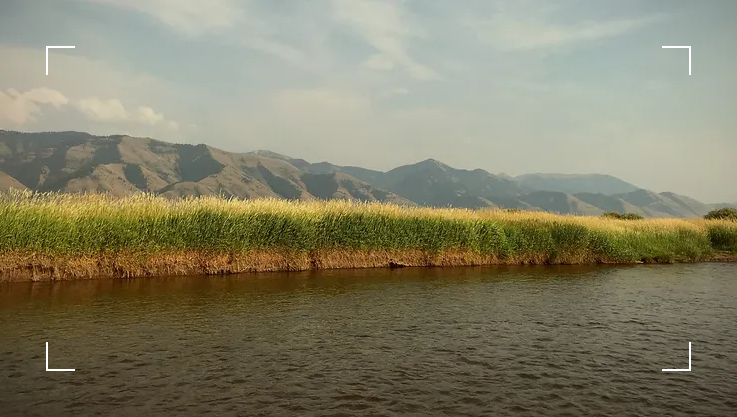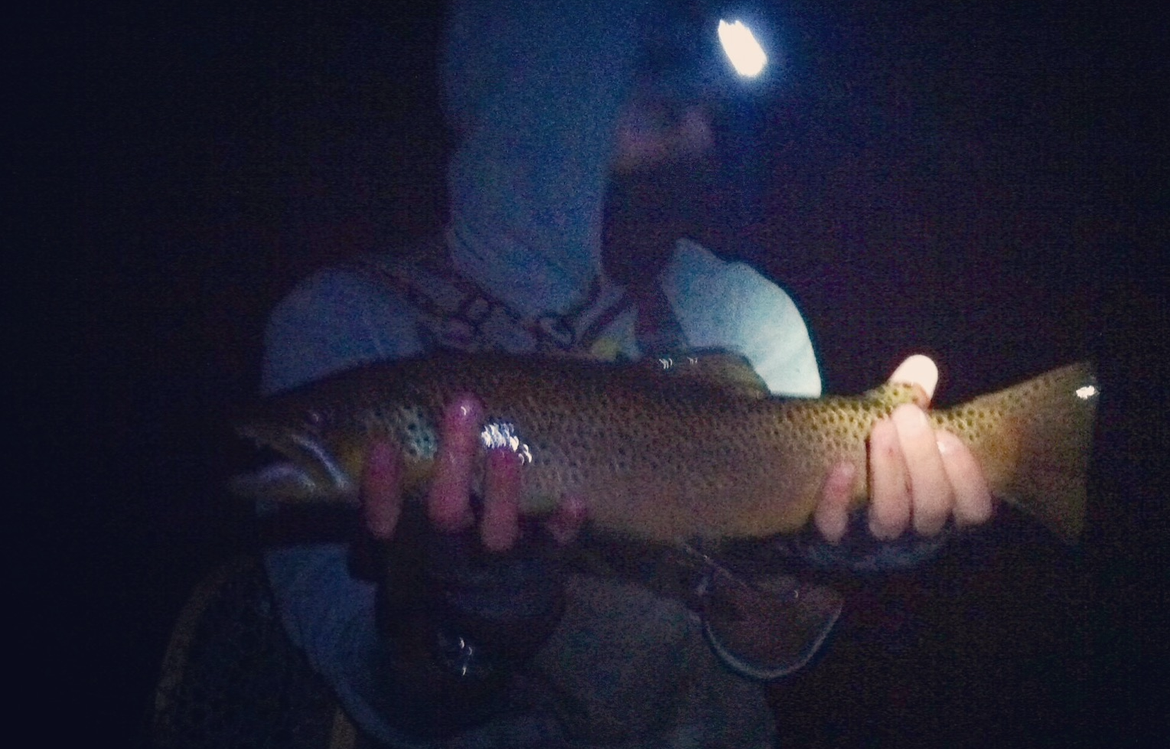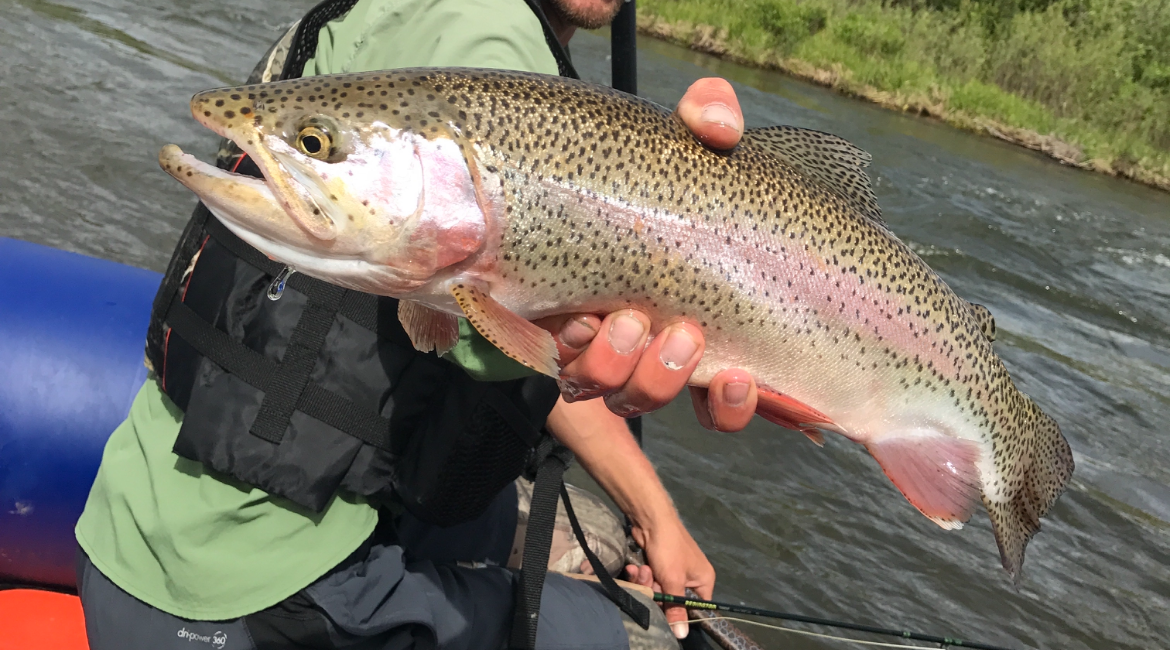Sibling Rivalry? Behavioral Differences When Browns and Rainbows Share a Stream
Rainbow Trout vs Brown Trout , the Ultimate Battle

November 2021
Previously, we highlighted the history and characteristics of rainbow trout, the good, the bad, and the ugly. We explored the history of their rise to prominence in North America; you can explore those articles here: Man's (Aquatic) Best Friend, Global Invaders.
We have long wanted to expand the discussion to incorporate brown trout, but realized that, for anglers, a more interesting article might be to compare the behavioral differences among these two common angling sport fish. After all, discussing trout behavior is a favorite topic on this blog. So, let’s take a look at the subtle but important differences between angling for brown and rainbow trout. Specifically, let's examine how the two species behave differently when cohabiting a stream. Even more importantly, let's look at how you, as an angler, can take advantage of these traits to better tailor your angling experience!
But before we consider these differences, there are two important exceptions to clarify: fish density within a system and water temperature. In rivers with low trout density, regardless of the variety, fish will primarily occupy the best holding spots that are available for their size. Whether the factors limiting fish density are habitat, food availability, or something else, fish may be forced into certain spots simply to survive. In this situation, it’s less likely to find drastic differences based on habitat. I know that some anglers don’t enjoy fishing rivers with a low density of trout, but there are some advantages for savvy anglers willing to put in the work on these types of streams. First, reading the water can be very simple. Find the best looking water and work it well! In some systems, like tailwaters, where food availability or habitat are somewhat regulated, trout can still grow to enormous proportions thanks to low rates of competition with other fish. So, low density isn't always such a bad thing. You’ll likely find less pressured or more aggressive fish. It’s unlikely that angling pressure is overwhelming on these types of rivers and more likely that fish will aggressively defend their prime spots in the river, which makes this type of angling more rewarding and exciting. Moving on...

The other caveat is water temperature. Simply put, warmer water will encourage fish to move further for food or move into higher velocity habitat patches with greater dissolved oxygen, while colder temperatures force fish deeper into slower water where they are required to expend less energy with their slower metabolisms. So for cold blooded animals like trout, behavior is contingent on the environment. For a more detailed examination of temperature preferences for trout, check out our Angler’s Guide to Stream Temperatures.
In systems with higher fish densities, water flows and food are more favorable. This more evenly disperses trout throughout the river system where they occupy all kinds of different spots to reduce competition and maximize comfort. Remember, trout aren’t lazy, they are optimizers.
Similar to our discussion of how trout and whitefish occupy different niches within a river, when multiple species occupy the same areas, they tend to select different habitat types to reduce competition. Remember, over long evolutionary timeframes, species have figured out their specific advantages and constantly rely on them. In the whitefish article (linked above), we discussed how the subterminal mouth of a whitefish tells you (the angler) that whitefish prefer to eat nymphs deep on the riverbed. So when you have trout living alongside whitefish, we suggested that trout have a greater tendency to eat flies higher in the water column or off the surface to avoid competing for the same food as whitefish. But, this can vary from hole to hole based on the composition of fish species occupying the same habitat patch. In ecological terms, this is a phenomenon known as resource partitioning and is very common throughout the animal kingdom. Now, let’s take a look at the differences in preferences brown trout have compared to rainbow trout when they are found in the same river system.

Rainbow Trout vs Brown Trout
Brown trout are energy conservers and try not to expend more energy than is necessary. Their habitat preferences include low velocity sections in streams and areas with lots of cover. As a result, brown trout favor overhead cover and bank structure where they feel secure. They also tend to feed in a similar manner, which means waiting for a good (i.e., juicy) reason to move. This rings true if you’re a streamer junkie, or prescribe to the Kelly Galloup school of thought for streamer fishing. (Boiled down, you have to jolt a big brown trout out of their slumber to either trigger a territorial strike or an aggressive predatory response.) Additionally, due to their tendency to lay low during the day, brown trout often occupy much smaller home ranges than rainbow trout. This means they find a few spots they like and tend to hang out. Young and his colleagues (1997) provided some data to support the old angling idiom that brown trout are more active at night which is when they leave their daytime cover to more actively hunt.

Conversely, rainbow trout cover more ground, frequently reposition themselves, and live a less predictable existence focused on energy acquisition. In streams, they may turn their attention to areas with greater velocity (compared to brown trout), nearer to the thalweg to maximize their chance of finding drifting insects. Some anglers might even overlook really fast water while in reality rainbow trout find the water perfectly comfortable. Remember, if you look at the cross-section of a river, velocity decreases towards the bottom. So a rainbow may be in comfortable water lower in the water column, while still taking advantage of feeding in the faster water. Keep this in mind when nymphing; it’s not always clear what to look for from the angler’s perspective. Think like a fish! Others have hypothesized that rainbow trout flee into suboptimal habitat when displaced by the more aggressive behavior of brown trout.
What about cutthroat trout and brook trout? While there are likely behavioral differences between all trout species, you can generally associate brook trout behavior more closely with brown trout behavior and cutthroat trout behavior with rainbow trout behavior.
How to leverage these differences as an Angler
If you know both brown and rainbow trout are present in a stream, here are some ways to uniquely target fish in those systems:
- Make aggressive (aka: might lose the fly) casts while fishing dries or streamers tight to the bank or under overhanging cover for bank-oriented browns
- Nymph through deeper-than-you'd-expect water for rainbows holding on the bottoms of a strong current
- Explore frog water for energy-conserving brown trout
- Carry two rods for quickly changing tactics as you wade fish upstream to cover all water types, rather than only nymphing and looking for nymph-specific water
- Target brown trout at night to take advantage of their nocturnal and aggressive nature
Sources:
- Gatz, AJ., et al. 1987. Habitat Shifts in Rainbow Trout: Competitive Influences of Brown Trout. Oecologia. 74, 1. http://www.jstor.org/stable/4218424
- Young, MK., et al. 1997. Contrasting Movement and Activity of Large Brown Trout and Rainbow Trout in Silver Creek, Idaho. The Great Basin Naturalist, 57, 3. http://www.jstor.org/stable/41713006
- Olsen, D. 2019. Tactical Fly Fishing: Lessons Learned from Competition for All Anglers. Rowman & Littlefield. ISBN 0811766039.



